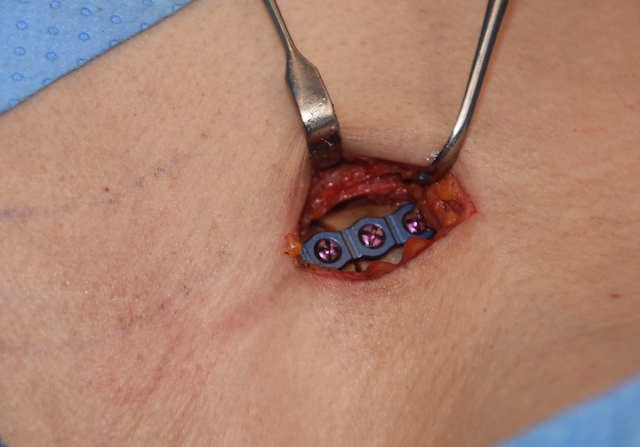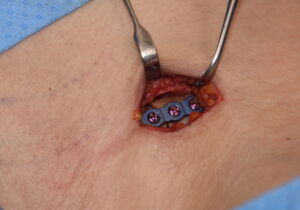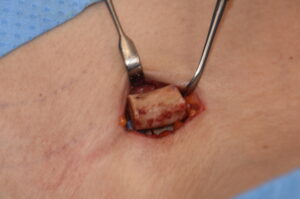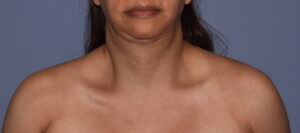Background: The desire for more narrow shoulder widths is an exclusive female aesthetic desire. Whether this presents in transgender or cis-female patients is irrelevant as the surgical procedure is the same as well as its outcome assessment. Standard bideltoid width distances do exist to define what is outside the normal range. And most patients that present for the surgery do have have wide shoulders by these measurements. But the most important preoperative determinant for surgery is the patient’s perception of their shoulder appearance.
Decreasing shoulder width by removing a segment of the clavicle is an effective surgery because of the bone’s near completely horizontal orientation. Reduction of any of its length will produce a shoulder narrowing effect of almost 1:1 based on the length of the bone removed. Interestingly the location of the osteotomy and bone removal is near the sternum while the effect it creates is on the opposite side of the clavicle out at the lateral deltoid muscle region.
The success of shoulder narrowing surgery is determined by two major factors and one more minor one. First and foremost does the clavicle osteotomy site heal successfully. Secondly, but very important, is what effect in shoulder width reduction is visually seen. Thirdly, of lesser importance to the first two, but still of aesthetic value is how does the scar look?
Case Study: This female desired to undergo shoulder reduction surgery with a bideltoid width of 49 cms.
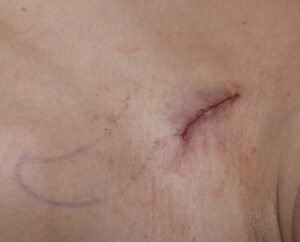
Her six month result showed a satisfactory reduction in shoulder width that was acceptable to her. Scars were fading but still slightly discernible. She had full range of motion of her shoulders and arms with no restriction or discomfort.
Besides a good result her recovery was interesting in that she began an earlier arm range of motion and activity level than I usually recommend…which had no adverse effects.
Case Highlights:
1) Shoulder narrowing surgery is effective because it shortens the horizontal length of the clavicle.
2) Outcome assessment in shielder reduction surgery is determined by the appearance of the shoulders, uncomplicated bone healing and incisional scar outcome.
3) One unique feature of surgically reducing the width of the shoulders is that the osteotomy site and the desired effect of the procedure are at opposite end of the clavicles.
Dr. Barry Eppley
Indianapolis, Indiana

